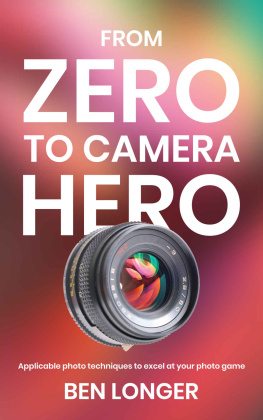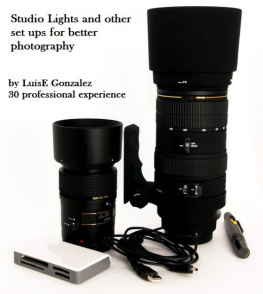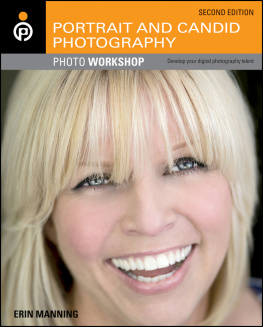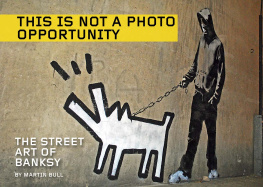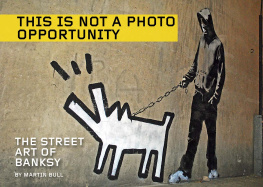


Text by Anne Pasternak and Darren Walker copyright 2019 Chronicle Books LLC.
Map on copyright 2019 Chronicle Books LLC.
All other text and images copyright 2019 by JR.
All rights reserved. No part of this book may be reproduced in any form without written permission from the publisher.
Library of Congress Cataloging-in-Publication Data available.
ISBN: 978-1-7972-0068-2 (epub, mobi)
ISBN: 978-1-4521-8492-0 (hardcover)
Design by Danielle Youngsmith.
Chronicle books and gifts are available at special quantity discounts to corporations, professional associations, literacy programs, and other organizations.
For details and discount information, please contact our premiums department at or at 1-800-759-0190 .
Chronicle Books LLC
Second Street
San Francisco, California 94107
www.chroniclebooks.com
CONTENTS
by anne pasternak
shelby white and leon levy director
of the brooklyn museum
JR LOVES PEOPLE
For years I pleaded with the TED staff to give its prestigious annual prize to an artist. My pleading bordered on pushy, even obnoxious. But I had long admired the conferences mission to do good in the world and was in awe of its mind-blowing reach to millions of online followers, and I believed TED could play an important role in amplifying art and artists that shared the companys commitment to progressing the social good. I wanted the world to know that contemporary artists around the world were stretching conventions about what art is and could be by working with community leaders, legislators, and even politicians to make tangible change around the globe. These were artists who werent just pointing to problems; they were working hard to solve them in fresh and creative ways. And who better than TED to get that message across?
My persistence over the years was received with grace and openness by the TED team. Then, in early 2011 , I got the call saying that TEDs leader, Chris Anderson, had agreed that an artist would receive the prize that year. I was thrilled and didnt waste a moment to nominate a few of my favorite artists working at the intersection of art and social change.
I couldnt wait to see who would win, and I was hopeful Id soon see one of my nominees on stage that March. But when Chris Anderson introduced the winner, I was stunned.
JR? Who is he? How could the TED team pick an artist I had never heard of?
I confess, I was enraged. I thought the TED team had blown it.
How wrong I was...
Within minutes, JRs ease, grace, humility, and humor on the TED stage began to crack my emotional armor. I listened as he described tagging buildings in Paris as a teenager and finding an old camera, which opened a new chapter in his life as a fledgling artist. Soon he was documenting his friends adventures as they tagged buildings across the city. Then he began gluing photocopies of his images on public walls, using the city as his gallery.
JR went on to describe the seminal moment in his career, in 2005 , when Paris was literally burning from protests over economic inequities. He saw his supersize images in the backdrop of global news footage, including on the front page of the New York Times. He was pained to see the press portray his subjectshis friendsas criminals. He knew he had to do something. So he took new portraits that challenged and poked fun at the medias racist narratives. It was at that moment, he says, that he realized the power of paper and glue.
JR soon began his travels to other places of pain. He traveled to Israel and the West Bank to meet residents and take portraits that were then wheatpasted in eight cities on both sides of the walluniting people through their commonalities and constituting the largest illegal show ever. He traveled to developing countries such as Sierra Leone, Liberia, Sudan, and Brazil to honor their women. In Rio, he decided to work in the most dangerous favela, where three students had been chopped to pieces. There he photographed the matriarchs of the community, including the mothers and grandmothers of those children, and pasted their faces on homes throughout the entire hillside. In one of the largest slums of Kenya, Kibera, JR made the work more useful as he covered roofs with portraits of residents in vinyl, to keep out the rain.
At the end of his TED talk, JR shared his dream to realize a global project, Inside Out, through which people could create a set of portraits, send them to JRs studio to be printed, and paste the prints within their own communities. Again, JR wanted to celebrate everyday people, support their agency, and have them share their own stories within their own communities.
The power of story has only become more important to JR over time. His portraits have taken over world landmarks and traveled on the high seas on shipping containers and across thousands of miles of land on freight trains. Today his work is going even further and deeper as he uses digital communication software to share the stories of his subjects. For example, in his continuous effort to advance understanding and bridge divides, JR collaborated with Time magazine in 2018 to take portraits and record the stories of people sharing a multitude of views on the subject of gun control in America. More recently, he has been weaving together roughly 1,200 individual portraits in cities including Paris, San Francisco, and New York, to create a new kind of mural, one that is a digital collage in which characters break out of frozen poses with slow, jagged movements and share their stories.
Why does JR commit to such monumental acts of art? Because JR loves people. Because he wants to do good in the world. And because he knows art can be a catalyst for change. This is JRs calling. And its why I fell for him.
by darren walker
president of the ford foundation
CAPTURING THE WONDER OF NEW YORK
When I first experienced JRs artistry, a few thousand miles from home, on a visit to Brazil, I immediately knew he was a special talent. His subversive tribute to the female gaze in his 2008 2010 Women Are Heroes collection quickly informed my understanding of who he was: a global artist with a fine-tuned sensibility for the intimate and the local. Through his gentle yet evocative lens, JR showcases vulnerable facets of the human condition in majestic ways that command our deliberate attention. He forces us to recognize and revere the dignity of his subjects: the splendor of their form, the fullness of their humanity, the universality of their experiences.
Ive since marveled at his perspective on the world, and I am awed to see his lens now turned on the city I have called home for more than thirty years. Within these pages, JR captures the essence and wonder of New Yorka city teeming with life, love, and love for lifeas only he can.
New York is a city that houses the world; its five boroughs contain multitudes of people, cultures, and identities. Every neighborhood tells a unique story, hums a different tune. And yet, they all join together to sing a harmonious songa beautiful alchemy thats so brilliantly illustrated and illuminated in The Chronicles of New York City. In this collection, JR documents New Yorks visual reality through his photographs and, in written passages, draws attention to the surrounding emotional, social, and anthropological context. This context not only crystallizes our understanding of these astounding images, it also expands and enhances our sensory experience of them. When you see his photographs of the Bronx or Brooklyn, Manhattan or Queens, and read the captions, you are totally transported. You can almost hear the sounds of the streets, smell the air, and feel the pulse of the people walking by; you can get swept away by JRs rich visualizations and their accompanying texts.
Next page



